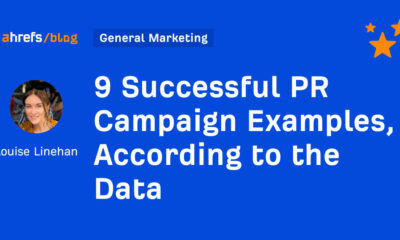MARKETING
10 rules for successful metaverse making
It was a balmy evening in the summer of 2006. A friend of mine had taken me to the house and home studio of Draxtor Despres, an award-winning documentarian, who I was interested in interviewing for a piece I was writing. Immediately I was smitten with this bespectacled, headphone-wearing character who spent much time puttering around his home studio cooking up creative projects.
He gave us the grand tour, which included a cozy and scattered live/work area and what looked like a full-blown production studio. Despres had been making some remarkably interesting mixed media content, and I was eager to understand his creative process. Before I had the chance to get into any probing questions, he kindly explained it was well past his bedtime, and he had an early morning. I checked my watch, and it was only 7 p.m., and then, as if on cue, Despres was gone. He had logged off.
Yes, this was a virtual meeting, but I remember it as if it were yesterday. The oldest and arguably most successful virtual world or metaverse Second Life (SL) had been our first meeting place. The platform allowed me to meet and chat with someone who lived across the globe, in a different time zone, while feeling like he lived right down the street.
Get the daily newsletter digital marketers rely on.
Despres and I — or Bernhard Draxas he is known outside of SL — met several times after that first fateful meeting. He was a regular content contributor to the publication I founded almost 15 years ago, SLentrepreneur, dedicated to “making money in the metaverse.” For years, I managed a global team of writers, photographers and editors, all within the virtual world of SL. I knew immediately that the platform offered something extraordinary. However, it would be over a decade later before anyone in my profession would start taking the metaverse seriously.

Despres has been heavily involved with virtual spaces for almost twenty years and has become my go-to for all things related to building and engaging virtual communities. Despres and I eventually met several times in person and became fast friends. I interviewed him while he was attending Augmented World Expo in San Jose, and we presented together at AWE Europe in Munich. It was a HUGE highlight of that trip to explore Despres’ home city of Munich together, IRL or “in real life.”
I recently asked him to share his knowledge with my XR students at the University of Oregon. What follows are the top ten insights from our lively discussion. You can view the entire interview on my Twitch channel and several other XR-themed expert interviews.
Ten rules of the road for metaverse marketing
1. Understand the true potential of the platform
The term metaverse has been around for a long time and only recently has been co-opted by companies claiming that they have built or are building a metaverse. A true metaverse does not exist. It is a purely aspirational concept that would allow for an open, connected and interoperable network of virtual environments dedicated to social interaction. The metaverse is meant to be like a 3D Internet, where you can digitally move from virtual environment to virtual environment.
Each environment could have a different set of rules, different “owners,” different citizens — similar to different countries if you like – with underlying infrastructure that allows for seamless travel between these virtual worlds. That infrastructure needs to be decentralized and ideally open-sourced so that nobody is left behind and one company doesn’t monopolize our digital universe. A recent Fast Company article discusses this concept and highlights OpenSim or OpenSimulator, an open-sourced network of virtual worlds created in 2007.
2. Understand the technology and the terminology
It is essential to understand the technology and terminology of virtual platforms. Virtual worlds and the metaverse are different. I would argue that the metaverse is an open and interoperable network of virtual worlds or environments. A “virtual world” is a digital space where you can spend time together and do nothing – you don’t need to play a game, for example – and no headset is required. Accessible 3D virtual spaces that users can access on a tablet, smartphone or laptop offer the same immersion and interaction as headsets or VR-based virtual worlds.
The media uses the term metaverse as a synonym for all the offerings in a virtual space, and often the term is associated with headset-based experiences. Meta, Apple, Microsoft, and anyone else who claims they have built a metaverse, has instead created a privately held, virtual world. These companies, of course, want you and everyone else to believe that they own the metaverse, thereby monetizing the data of its users and potentially monopolizing revenue from the required software to access the space.
3. Get smart on the benefits of immersion
There has been much research on the benefits of using virtual spaces to connect with and engage users. Virtual spaces improve recall of information, provide a greater sense of embodiment and presence, allow for greater interaction and agency, and help limit distractions. There are many different types of immersion: Strategic, tactile, sensory, narrative, spatial and virtual environments can help marketers and comms professionals leverage them all, making their experiences more interactive and less passive.
4. Refer to your audience as residents or citizens instead of users
Using the term “resident,” or “citizen” for virtual world users indicates they have a stake within that community and moves them into an active role instead of a passive one. This tenant reminds me of the great work done by Jonah Sachs and what he terms “empowerment marketing.” One of the tactics of empowerment marketing — forget the consumer and call on the citizen — reminds us that inspired citizens make better brand evangelists than helpless consumers. You can read more about Sach’s empowerment marketing in this great series of articles featuring his work.
5. Understand the differences between consumption devices
Just like you need to become familiar with a new social media platform before launching a campaign on the platform, you need to understand how your audience is consuming the virtual world. Within the splintered virtual world ecosystem, different virtual communities and platforms are consumed through a variety of different devices like smartphones, tablets, PCs, Mac computers, tethered headset devices like the Rift, tetherless headset devices like the Oculus Quest, mixed media devices like Microsoft’s Hololens and mobile VR devices like Google Cardboard.
This is one of the reasons building an interoperable network of virtual worlds is so daunting. There currently is not a set standard method of consuming these immersive environments. Each virtual world has been built to support very specific hardware, so understanding these requirements is essential before diving in.
6. Speak their language
Become familiar with the thriving virtual environments that exist today. Each virtual world requires a different avatar, language, etiquette, etc. If you are building a marketing plan for a virtual space – you need to understand as much as you can about the residents. Some great questions to ask include: What are the demographics of residents? Why are they on the platform? What role or need does the platform play in the life of the resident? What is the unique language of the platform? What are the community norms, rules and regulations?
7. Location, location, location!
Any good marketer understands you need to GO TO your audience, and tapping into an already thriving and active community is much cheaper than building one from scratch. When choosing a location or platform for your virtual experience, a strategic approach is required. The platform you choose can mean the difference between success and failure and should depend on your overall marketing goals and objectives and your target audience. Factors to consider: Who is spending time on the platform, how are people spending their time on the platform, and what is the cost (money/time) to spend time on the platform?
8. Use the design thinking process
Approaching your virtual world or metaverse strategy from a design thinking perspective is essential to make sure you are solving a real problem for the user. Leverage the tenets of design thinking:
1) Empathize with your target audience.
2) Define the problem statement.
3) Ideate.
4) Prototype.
5) Test.
This allows brands to understand residents’ core concerns better and ensure they are using technology to provide solutions rather than just sizzle. Big brands can succeed in virtual spaces if they respect the residents and design for their needs, not focus solely on the brand objectives.
9. Prioritizing short-term economic gains sacrifices resident experience
Today’s economic climate forces companies of all sizes to continually prove value to investors, with a quick ROI becoming the focal point to succeed. Therefore, it is no wonder that technology companies use short-term tactics to get their user numbers UP at the cost of longer-term considerations for the residents/users. It IS possible to build a lucrative, online platform without selling user data and force-feeding advertising down users’ throats.
For example, SL has slowly but steadily grown over the last decade because it is a freemium or subscription-based model. They rent virtual space to their residents, and the resident can do with it what they want. This business model allows SL not to sell resident data to advertisers. Linden Lab, the creator of SL, also gets about a 9% transaction fee for all virtual goods sold by users on the platform. Philip Rosedale, the founder of SL and an outspoken leader in the virtual world space, positions SL as a place where you can have digital sovereignty. Isn’t that refreshing? Rosedale has rejoined Linden Lab’s board of directors in hopes of providing a viable alternative to Meta’s (Facebook’s) virtual environment, where they are purportedly planning to charge over 40% for transaction fees while at the same time making billions from offering user data to advertisers.
10. Join an active community of virtual world explorers and pioneers
Trying to become familiar with all the virtual environments can be daunting, if not downright impossible. It is much more enjoyable to explore these worlds with natives, who speak the language and can help you learn the customs quickly. Several great communities bring together professionals looking to expand their knowledge in this space. I am involved with the VRAR Association, Augmented World Expo, Despres SL Life Book Club, and I host my own XR Pub Crawl. You can read the highlights from my last XR Pub Crawl with Billie Goldman in this recent post or register to join me LIVE on my birthday, where we’ll explore the latest virtual spaces being used for marketing and communications.
If you’re looking to get additional training on marketing in the metaverse, read my post “Become a Metaverse Marketing Maven,” where I outline some great online resources to help you flex your metaverse muscle. Remember, as I always tell my communications students, with XR and immersive media, we are only limited by our imagination. Together we can build something that will inspire, engage and immerse our digital citizens and communities!
Opinions expressed in this article are those of the guest author and not necessarily MarTech. Staff authors are listed here.














You must be logged in to post a comment Login